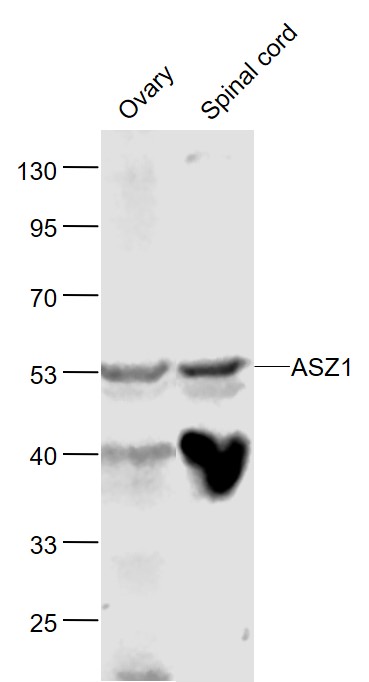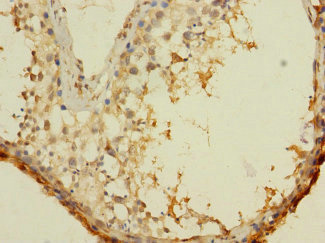ASZ1 antibody
GTX111618
ApplicationsWestern Blot, ImmunoHistoChemistry, ImmunoHistoChemistry Paraffin
Product group Antibodies
TargetASZ1
Overview
- SupplierGeneTex
- Product NameASZ1 antibody
- Delivery Days Customer9
- Application Supplier NoteIHC-P: 1:100-1:1000. *Optimal dilutions/concentrations should be determined by the researcher.Not tested in other applications.
- ApplicationsWestern Blot, ImmunoHistoChemistry, ImmunoHistoChemistry Paraffin
- CertificationResearch Use Only
- ClonalityPolyclonal
- Concentration0.77 mg/ml
- ConjugateUnconjugated
- Gene ID136991
- Target nameASZ1
- Target descriptionankyrin repeat, SAM and basic leucine zipper domain containing 1
- Target synonymsALP1, ANKL1, C7orf7, CT1.19, GASZ, Orf3, ankyrin repeat, SAM and basic leucine zipper domain-containing protein 1, ankyrin-like 1, ankyrin-like protein 1, germ cell-specific ankyrin, SAM and basic leucine zipper domain-containing protein
- HostRabbit
- IsotypeIgG
- Protein IDQ8WWH4
- Protein NameAnkyrin repeat, SAM and basic leucine zipper domain-containing protein 1
- Scientific DescriptionPlays a central role during spermatogenesis by repressing transposable elements and prevent their mobilization, which is essential for the germline integrity. Acts via the piRNA metabolic process, which mediates the repression of transposable elements during meiosis by forming complexes composed of piRNAs and Piwi proteins and govern the methylation and subsequent repression of transposons. Its association with pi-bodies suggests a participation in the primary piRNAs metabolic process. Required prior to the pachytene stage to facilitate the production of multiple types of piRNAs, including those associated with repeats involved in regulation of retrotransposons. May act by mediating protein-protein interactions during germ cell maturation.
- Storage Instruction-20°C or -80°C,2°C to 8°C
- UNSPSC12352203
References
- Ikeda S, Tanaka K, Ohtani R, et al. Disruption of piRNA machinery by deletion of ASZ1/GASZ results in the expression of aberrant chimeric transcripts in gonocytes. J Reprod Dev. 2022,68(2):125-136. doi: 10.1262/jrd.2021-146Read this paper





